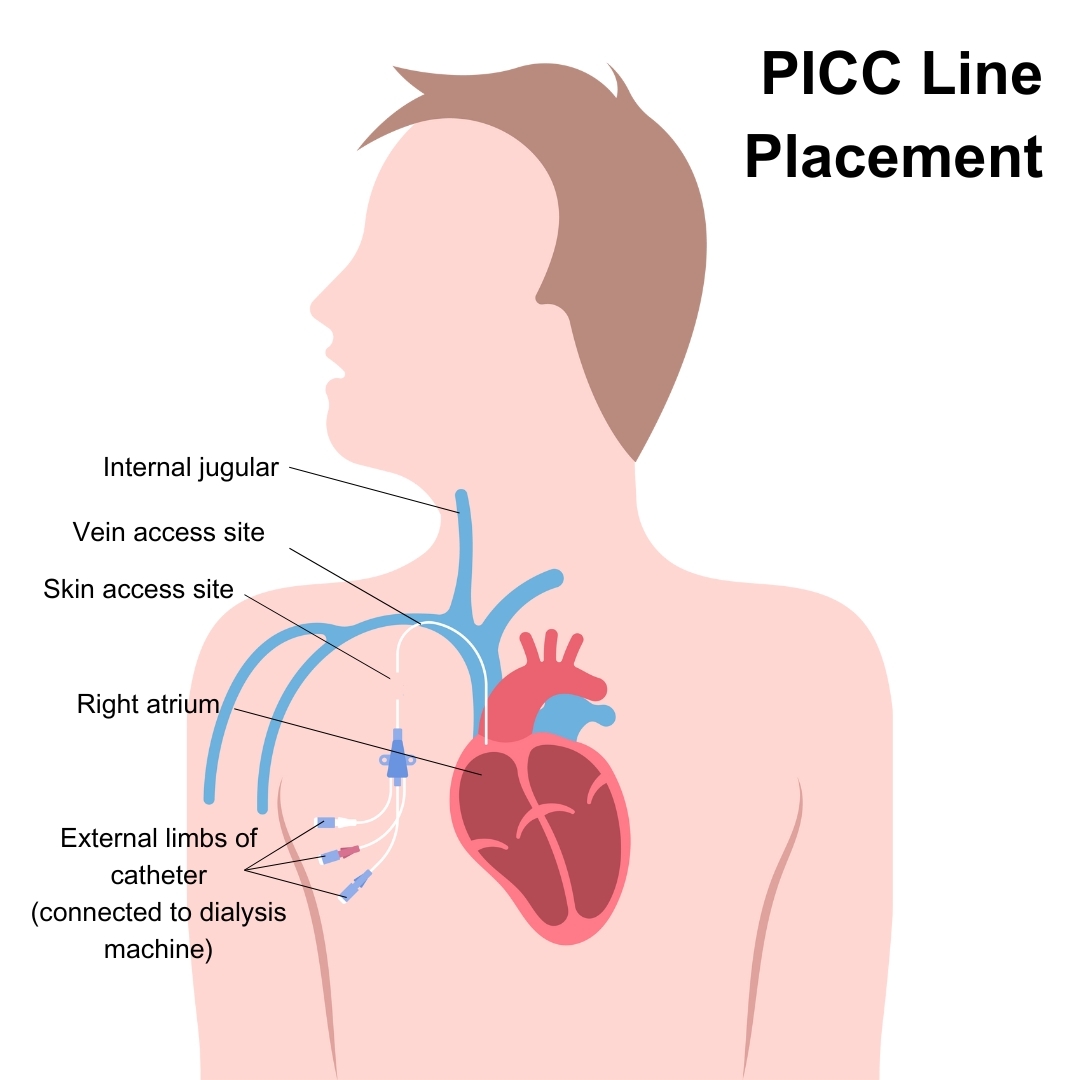
You may need a peripherally inserted central catheter (PICC) or a port line if you find yourself in a medically supervised situation needing frequent medication or blood draws. One end of a PICC is inserted into your vein, and the other end is kept outside your skin, where it can be connected to an IV. A port is similar, except the end is still under your skin, accessible with a needle through a rubber cap. Both serve a purpose when you need long-term care. Trust Dr. George Bolotin of the Astra Vein Treatment Center in Brooklyn and Bronx for expert care when you need either. Call for an appointment today.
A peripherally inserted central catheter (PICC), also known as a long line, is a type of central venous access catheter. That just means it’s a tube inserted through a vein temporarily to provide ready access to your bloodstream. One end is inside your vein, while the other end sticks out at the source, where it’s capped.
Once placed into your vein, a PICC allows your doctor quick, pain-free access to your vein to deliver nutrients and medications without needing additional needle punctures. Since a bit of the tube protrudes, your doctor merely removes the cap and connects an intravenous (IV) line to the catheter.
Made of durable, flexible, infection-resistant plastic tubing, PICCs can remain in your vein for weeks or even months, usually under supervision. In Brooklyn, NY and Bronx, NY, Dr. George Bolotin and his team at the Astra Vein Treatment Center perform a PICC line placement procedure when needed. It’s not a common procedure unless you need to be hospitalized for some time.

Similar to a PICC, a port provides access to your bloodstream for extended periods. While PICCs can last for months, your doctor can supply IV medications through a port for years. Like a PICC, a port is made out of strong, flexible plastic that resists infection.
Ports are available in different sizes and can be divided into several channels, known as lumens, to administer antibiotics, nutrients or other medications simultaneously. One or two lumens are usually enough for most patients. As a vascular vein doctor in Brooklyn and Bronx, Dr. Bolotin specializes in installing ports, which consist of two parts:
PICCs allow Dr. Bolotin to administer medications to the large veins bringing deoxygenated blood back to your heart. He may recommend a PICC if you require repeated pricks to take blood or deliver medicine. These catheters are considered a temporary solution for patients whose treatment is only expected to last several weeks, but not longer than several months.
While PICC or a port is not a perfect solution for everyone, several different types of patients can benefit from either a PICC line placement or a port placement. You may be a good candidate if you need:
Placing a PICC line doesn’t require general anesthesia, but you do receive a local anesthetic to alleviate any discomfort. Dr. Bolotin likely uses ultrasound or a CT scan for live, clear images of your veins. Some doctors place the PICC near your elbow of your non-dominant arm, but others prefer to insert them near your neck or collar bone. The PICC line placement procedure follows a number of steps that include:
Placing a port line is similar, except there’s no protruding catheter. The line ends with the rubber port situated under your skin on the side of your chest. Your doctor accesses the line with a needle through your skin and through the rubber port, into the catheter.
After the procedure, Dr. Bolotin gives you specific instructions for the care, maintenance and protection of your new PICC or port line. You can trust him with your health since he’s an acknowledged expert in Interventional Radiology, making him a vein specialist too. Contact the Astra Vein Treatment Center in Brooklyn and Bronx for an initial consultation.
Vein & Vascular Medical Care
4209 Ave U, Suite A.
Brooklyn, NY 11234
(347) 934-9068
Vein & Vascular Medical Care
869 E Tremont Ave
Bronx, NY 10460
(929) 447-4563
Vein & Vascular Medical Care
30-71 Steinway St
Astoria, NY 11103
(929) 486-2201